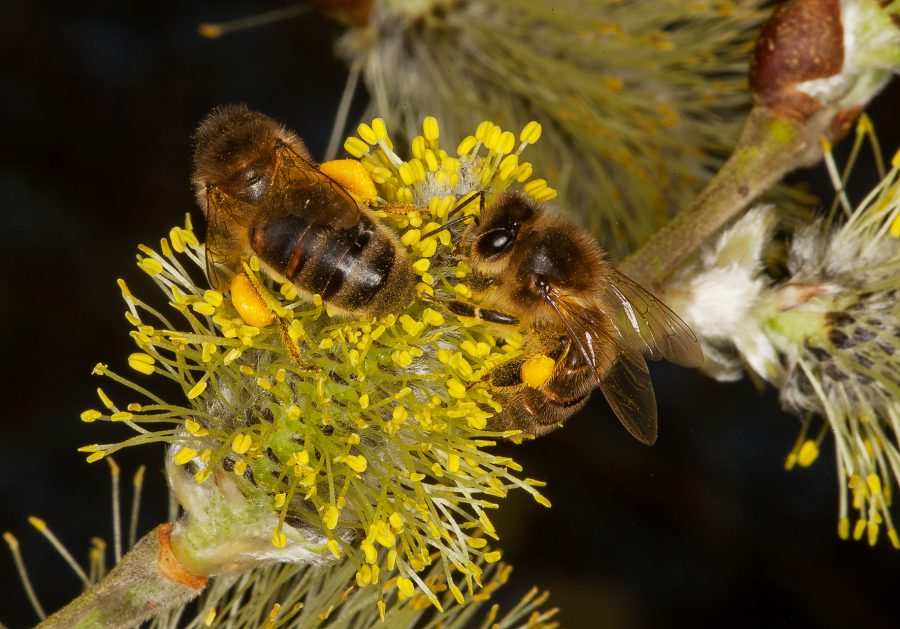Keep a close eye on your bee colonies to make sure they don’t starve before the spring flowers come into bloom, says Claire Waring
In one sense, there isn’t very much for the beekeeper to do in January but that does not mean you can ignore your bees. Colonies are most at risk of running short of food in the first couple of months of the year rather than in the depths of winter. From outside, the hives look unoccupied although, on a warm, sunny day, some bees may venture out to defecate.
AMAZING INSECTS
Bees are amazing insects. In the active season (spring and summer), worker bees live around six weeks. Initially they do ‘housework’, feeding larvae and cleaning cells. They progress to feeding and grooming the queen before their wax glands develop and they move on to comb construction. Next they receive nectar from incoming foragers and store it in the comb as honey. They may spend some time on guard duty before joining the foraging force to collect nectar, pollen, propolis (a sticky resin exuded by trees such as poplar) and water, according to the colony’s needs. The location of these will be communicated by dances performed by scout bees or other foragers returning to the hive. After foraging for about three weeks, they are worn out and die.
ALL CHANGE
However, at the end of the season, around September/October, things change. The worker’s physiology changes and she becomes a ‘winter’ bee. As such, she builds up the fat bodies in her abdomen by consuming large amounts of protein, obtained from pollen. Her metabolic rate lowers and she does very little work. She is able to live for some six months and survive through the winter to help build up the colony the following spring. As the ambient temperature falls to around 18°C, the bees begin to cluster together. The cluster gets tighter as it gets colder outside but the temperature in the centre of the cluster is maintained at about 25°C. Here, bees can move around a little, but those forming the outer insulating shell are inactive and therefore get cold. At about 8°C, a bee can no longer move and it will die, so the workers change places from time to time to let the outer ones warm up.
THINGS START TO MOVE
By January/February, things are beginning to move. The lengthening days stimulate the queen to increase her egg-laying rate and brood production gets underway. On warm days, workers fly from the hive and this increased activity, coupled with the needs of the developing larvae, means the bees will start consuming their winter stores more rapidly. You need to keep a close eye on your colonies to make sure they don’t starve before the spring flowers come into bloom. If you have fed them properly in the autumn, they should be fine but you need to check occasionally to be certain. Many beekeepers assume colonies are most likely to die during the winter months but it is, in fact, more likely to happen in the spring when demands on the food reserves and on the bees themselves increase. The workers are old and the extra strain of producing brood food for the larvae may well be too much for them.
This article extract was taken from the January 2024 edition of The Country Smallholder. To read the article in full, and find out what to do if your bees are lacking food, you can buy the issue here.
To receive regular copies of The Country Smallholder magazine featuring more articles like this, subscribe here.
For FREE updates from the world of smallholding, sign up for The Country Smallholder newsletter here.








